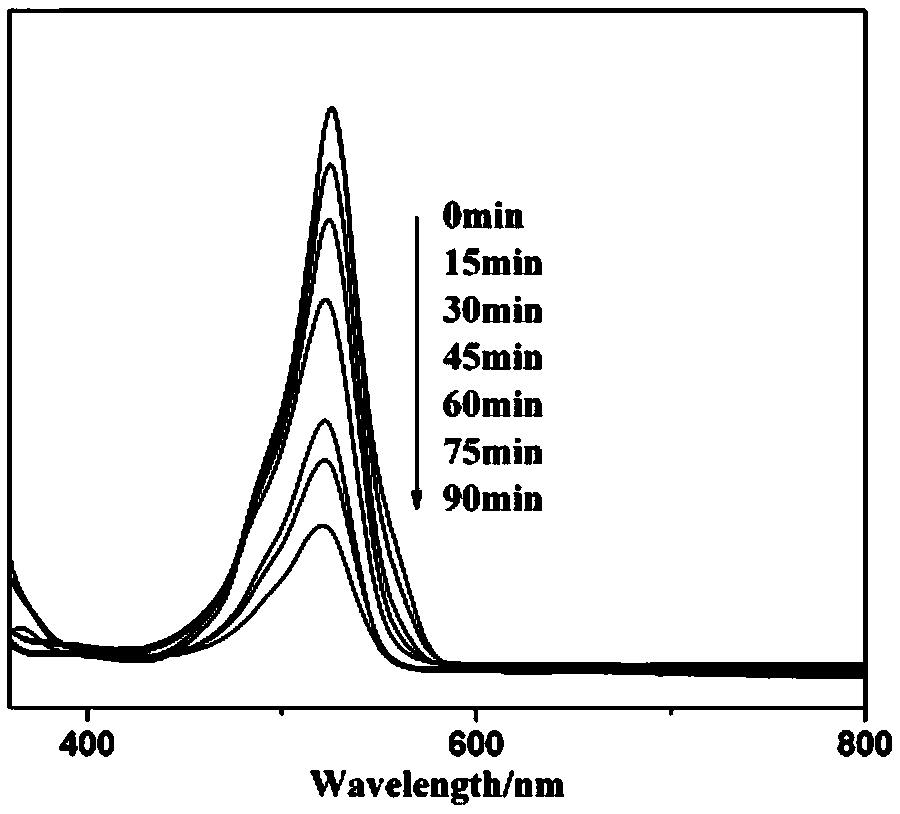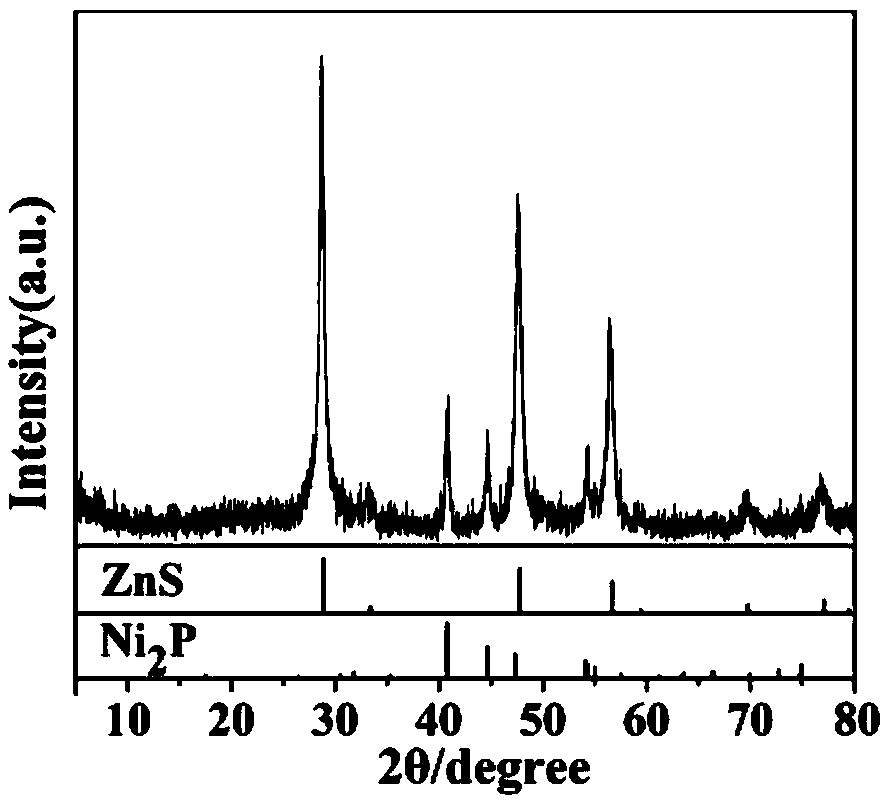A kind of preparation method of core-shell structure zns/ni2p composite microsphere
A core-shell structure and composite technology, which is applied in the field of photocatalysis to achieve the effects of simple and easy-to-obtain raw materials, superior photocatalytic performance, and easy-to-control conditions.
- Summary
- Abstract
- Description
- Claims
- Application Information
AI Technical Summary
Problems solved by technology
Method used
Image
Examples
Embodiment 1
[0026] A core-shell structure of ZnS / Ni 2 The preparation method of P complex microspheres comprises the following steps:
[0027] 1) Preparation of zinc sulfide microspheres: 1 mmol Zn(CH 3 COO) 2 ·2H 2 O was dissolved in 15 mL of distilled water. Under magnetic stirring, 0.45 mL of glacial acetic acid was added. After magnetic stirring for a while, 1.5 mmol of thiourea was added to the system. In the reaction kettle of polytetrafluoroethylene, the reaction was carried out at 170 °C in a constant temperature oven for 8 hours. After the reaction was completed, it was cooled naturally, centrifuged, and the samples were washed with distilled water and absolute ethanol, respectively, at 60 °C in a vacuum drying box Dry for 6h to get white powder, refer to image 3 , the white powder was characterized by X-ray diffractometer and scanning electron microscope, and the obtained product was zinc sulfide with microsphere structure;
[0028] 2) Preparation of ZnS / Ni 2 P composite ...
Embodiment 2
[0031] Using the zinc sulfide powder prepared in step 1) in Example 1 as the raw material, in step 2), no sodium dodecyl sulfate (SDS) was added, and other conditions remained unchanged. Through characterization analysis, the obtained product contained a small amount of impurities , and its morphology is comparable to that of ZnS / Ni in Example 1 2 P composite microspheres are more messy.
Embodiment 3
[0033] Using the zinc sulfide powder prepared in step 1) in Example 1 as a raw material, in step 2), the amount of citric acid was changed to 0.15 mmol, and other conditions remained unchanged. Through characterization analysis, the obtained product is ZnS / Ni 2P composite microspheres. Using pyrrole red B solution as the photocatalytic degradation dye, the degradation rate reached 76% after 90 min of illumination.
PUM
 Login to View More
Login to View More Abstract
Description
Claims
Application Information
 Login to View More
Login to View More - R&D
- Intellectual Property
- Life Sciences
- Materials
- Tech Scout
- Unparalleled Data Quality
- Higher Quality Content
- 60% Fewer Hallucinations
Browse by: Latest US Patents, China's latest patents, Technical Efficacy Thesaurus, Application Domain, Technology Topic, Popular Technical Reports.
© 2025 PatSnap. All rights reserved.Legal|Privacy policy|Modern Slavery Act Transparency Statement|Sitemap|About US| Contact US: help@patsnap.com



